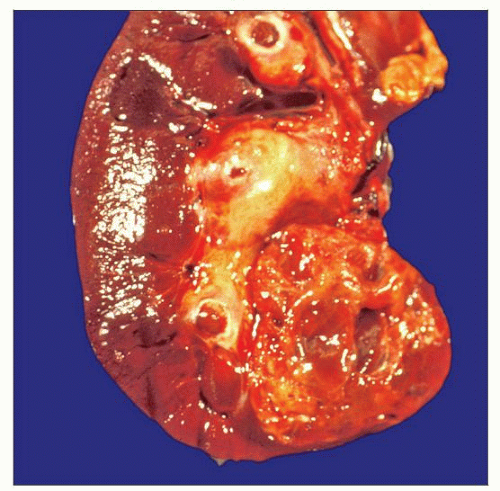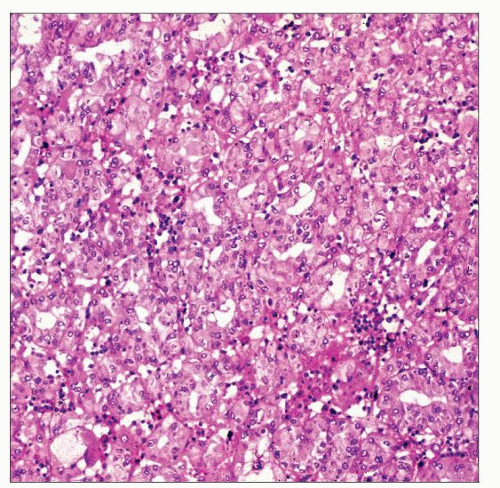Second Tumors
Satish K. Tickoo, MD
Victor E. Reuter, MD
Key Facts
Terminology
Renal cell tumors that develop following earlier renal or nonrenal tumor or other treated nonneoplastic autoimmune conditions
Most of these tumors develop after prior chemotherapy
Etiology/Pathogenesis
Best recognized prior tumor is neuroblastoma
Rare 2nd tumors also reported in cases with prior Wilms tumor
Another entity recognized to be associated with chemotherapy is TFE renal carcinoma
Microscopic Pathology
Initially described to be characteristic for specific tumor-associated 2nd tumors
However, similar morphologic features are seen in 2nd tumors developing after variety of 1st tumors
Morphologically different 2nd tumors can also develop following same 1st tumor
Most post-neuroblastoma carcinomas with eosinophilic and focally reticular cytoplasm, with solid and papillary architecture
More recently, tumors with more variable cytoarchitectural features also described
Rare cases confirmed to be MiTF/TFE family translocation-associated carcinomas in post-neuroblastoma setting
Rare carcinomas reported after therapy for other tumors similar to neuroblastoma-associated carcinoma
 This post-chemotherapy renal cell carcinoma has oncocytoid features similar to neuroblastoma-associated renal carcinoma. Such tumors may develop after therapy for other tumors, as well. |
TERMINOLOGY
Definitions
Renal cell tumors that develop following earlier renal or nonrenal tumor or other treated nonneoplastic autoimmune conditions
Most of these tumors develop after prior chemotherapy
Rare tumors occur spontaneously and without any chemotherapy
ETIOLOGY/PATHOGENESIS
Prior Tumors
Best recognized prior tumor is neuroblastoma
2nd tumors in most cases have developed after chemotherapy for high-stage neuroblastoma
Suggests possible role for chemotherapy-induced chromosomal instability
Rare tumors have presented synchronously or without receiving any chemotherapy
Suggesting possible underlying genetic susceptibility as a factor, rather than chemotherapy, at least in some cases
Rare 2nd tumors also reported in cases with prior Wilms tumor
Many of these, in addition to receiving chemotherapy, have also received radiation
Another entity, recognized to be associated with chemotherapy, is TFE-translocation-associated renal carcinoma
Prior conditions requiring chemotherapy have included leukemias, Wilms tumor, or nonneoplastic diseases like SLE and Hurler syndrome
In these cases, cytotoxic chemotherapy is proposed to predispose for development of 2nd tumors
Chemotherapy also implicated in very rare cases reported after therapy for other tumor types, including leiomyosarcoma
Genetic Features
Few post-neuroblastoma tumors tested have often been aneuploid, with multiple allelic imbalances in different chromosomes
Many tumors with 14q31 and 20q13 abnormalities
Translocation-associated renal carcinomas with spectrum of fusions, similar to cases with no prior history of therapy, including
ASPL-TFE3, α-TFEB, and PRCC-TFE3 fusions
CLINICAL ISSUES
Epidemiology
Incidence
Following childhood cancer, incidence of 2nd cancer in survivors is higher than in general population
Stay updated, free articles. Join our Telegram channel

Full access? Get Clinical Tree



